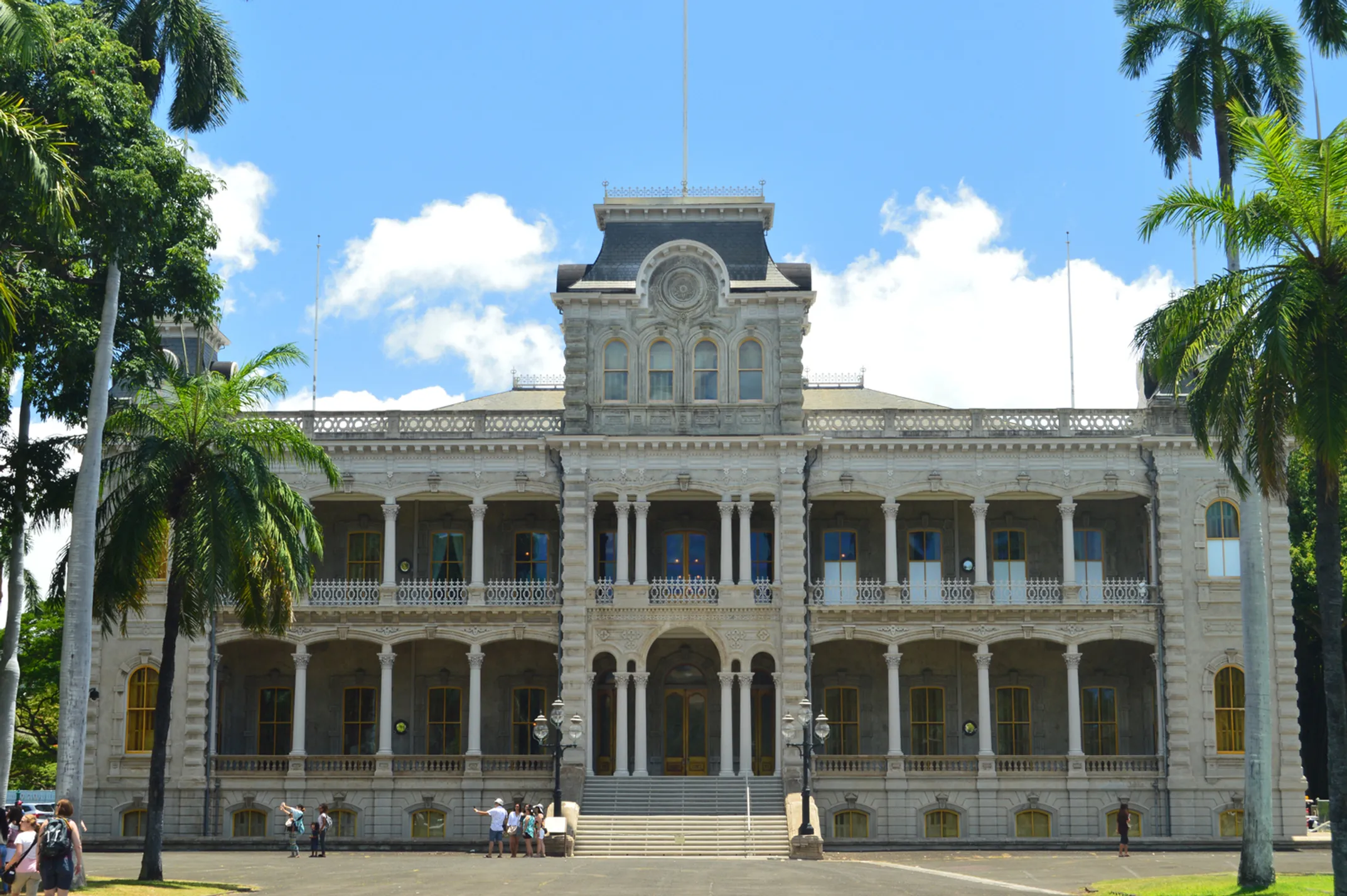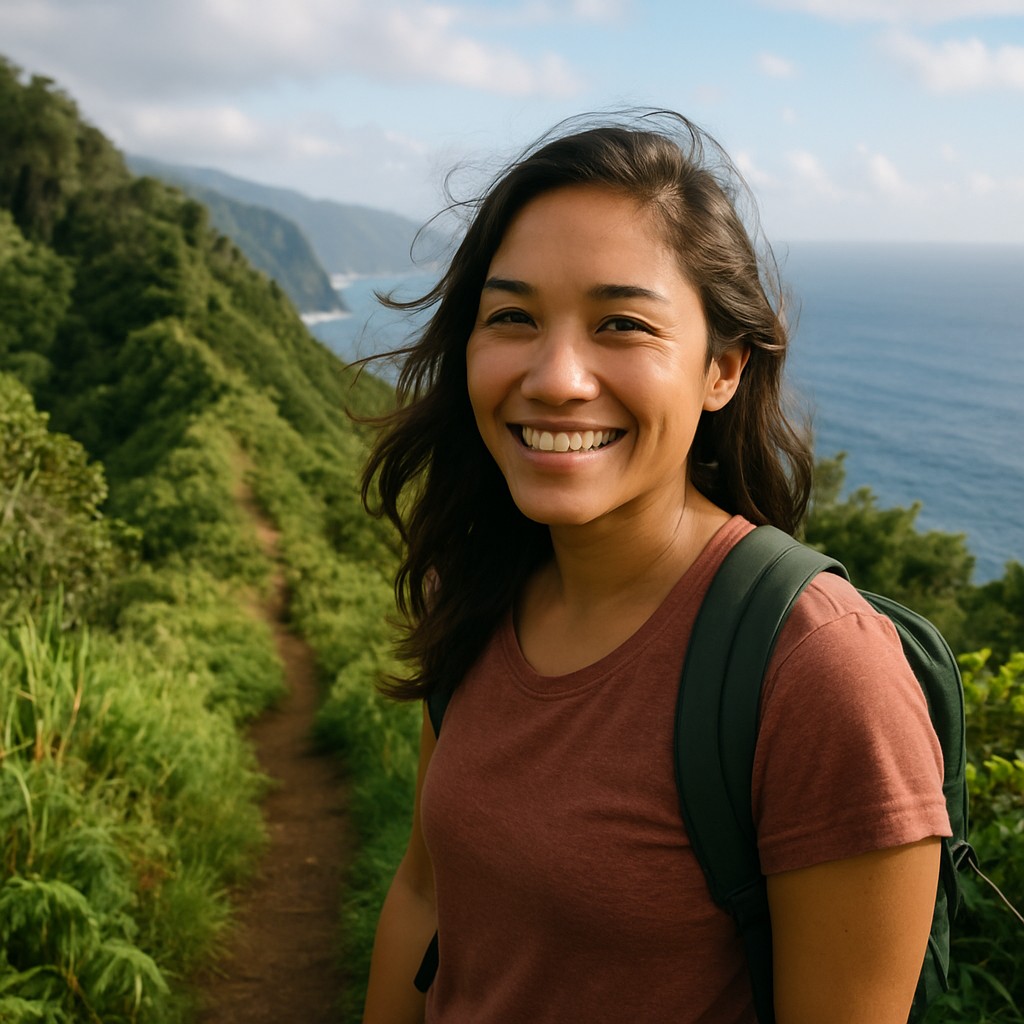

Sacred Hawaiian Practices
Life Rituals & Seasonal Protocols That Connect Us to the Land

Written by a Cultural Practitioner
Jade KawanuiModern Kapu: Sacred Rules in a Tourist World
Before contact with the West, the kapu system governed every aspect of Hawaiian life. These weren't just rules. They were spiritual laws that maintained balance between the physical and sacred worlds.
Some kapu protected resources. Fishing was banned during spawning seasons. Others maintained social order. The ʻai kapu prevented men and women from eating together.
In 1819, King Kamehameha II deliberately broke the kapu system in an event called ʻAi Noa, or "free eating." This created massive social upheaval and opened the door for missionaries and Western influence.
But the spirit of kapu survived. It evolved into modern protocols of respect.
Visit any heiau today and you'll see signs: "Sacred site. No trespassing." That's modern kapu. Enter quietly. Ask permission silently. Don't touch or move anything. Leave only footprints.
The same applies at home. Remove your shoes before entering. It acknowledges the boundary between outside and inside, public and sacred.
These protocols create tension in a state built on tourism. How do you share sacred places without cheapening them? How do you welcome visitors while protecting what's holy?
The answer isn't to close everything off. It's education. When tourists understand why certain behaviors matter, most want to do right. The problem comes from ignorance, not malice.
Mālama ʻĀina: The Land Comes First
"He aliʻi ka ʻāina; he kauwa ke kanaka." The land is a chief; man is its servant.
This ʻōlelo noʻeau captures the core of Hawaiian environmental thinking. Humans don't own the land. They serve it. They care for it. They have kuleana—responsibility, right, and privilege—to protect it.
This worldview comes from the moʻolelo of Hāloa. Sky father Wākea and earth mother Papahānaumoku had a daughter, Hoʻohōkūkalani. Their first child together was stillborn. They buried this child, named Hāloa, and from that spot grew the first kalo plant.
Their second son, also named Hāloa, became the ancestor of all Hawaiian people. This makes kalo our elder sibling. It makes the land our family.
When you understand this genealogy, caring for the environment isn't environmentalism. It's caring for relatives.
Modern practitioners use this knowledge to solve current problems. The ahupuaʻa system—traditional land divisions that run from mountain to sea—guides watershed restoration projects. Ancient fishpond techniques help restore marine ecosystems.
Organizations like Hawaiʻi Land Trust on Maui are rebuilding entire food systems using traditional methods. They're restoring kalo fields, fishponds, and native forests. They're proving that ancient wisdom works for modern challenges.
This isn't just about plants and fish. It's about food security, climate resilience, and cultural survival all woven together.
For visitors, mālama ʻāina offers a way to give back. Join beach cleanups with groups like 808 Cleanups. Volunteer for native plant restoration. Choose hotels that prioritize sustainability.
The relationship becomes reciprocal. The ʻāina gives you beauty, peace, and healing. You give back protection and care. This is how visitors become partners instead of just consumers.
🌱 Ahupuaʻa System
Traditional land divisions from mountain to sea guide modern watershed restoration projects using ancient wisdom.
🐟 Fishpond Restoration
Ancient techniques help restore marine ecosystems, proving traditional knowledge works for modern challenges.
🌾 Kalo Cultivation
Organizations rebuild food systems using traditional methods, restoring kalo fields and native forests.
🌊 Reciprocal Relationship
The ʻāina gives beauty, peace, and healing. You give back protection and care through volunteer work.
From Piko to Pō: Rituals Through Life's Journey
Hawaiian tradition marks every stage of life with meaning and ceremony. These rituals don't just celebrate milestones. They weave individuals into the fabric of family, community, and land.
The First Root: Piko Ceremony
The piko ritual begins life with permanent connection to place. After the umbilical cord dries and falls off, families take it to ancestral land. Some carve holes in sacred stones and seal the piko inside. Others bury it under newly planted trees so child and tree grow together.
My grandmother chose the stone method. She said if the piko was gone the next morning, I'd live a long life. It stayed put, which she claimed meant I'd be stubborn. Turns out she was right on both counts.
During my homeless period, this connection to place became everything. When you lose your house, your job, your sense of stability, knowing you belong somewhere deeper than any address keeps you going. The ritual had worked exactly as intended.
Related to piko is kanu ʻiewe, burial of the placenta. While piko connects you to your life path, ʻiewe connects you to a specific place. Both practices ensure children understand their roots from birth.
The Community Welcome: First Birthday Lūʻau
Surviving the first year used to be a major achievement. The baby lūʻau celebrates this milestone with massive community gathering.
These parties blend ancient customs with modern multicultural influences. Beach park pavilions fill with long tables covered in newsprint. Kerosene torches light the evening. The air carries smoke from grilled fish and kalua pig. Uncles and aunties break out guitars and ʻukulele. Kids and kupuna dance hula together.
Ancient ceremonies included placing symbolic items before babies to divine their future talents. Fishing gear might predict an ocean-connected life. Kapa beaters could signal artistic gifts.
Modern lūʻau focus more on community bonding than fortune telling. But the core purpose remains: officially welcoming new members into the extended ʻohana.
Becoming Adults: The Journey to Responsibility
Traditional coming-of-age ceremonies varied, but all emphasized accepting kuleana for community and culture. Modern practitioners are creating new rites of passage that capture this spirit.
Some develop ʻaha ceremonies where youth formally accept their cultural responsibilities. These might include symbolic rope braiding, with each strand representing an ancestral line.
For young men, paths to manhood traditionally involved physical and spiritual challenges. Hula training built strength and discipline. The demanding ʻai haʻa style, performed in deep squats, prepared warriors for lua martial arts. Cliff diving proved courage and commitment.
Young women's journeys often centered on reclaiming female mana. Pre-contact Hawaiian society honored women's power, especially their creative and life-giving abilities. The cultural revival includes restoring women's prominence and authority.
Training in hālau hula provides modern rites of passage for all genders. Years of studying dance, chant, language, and history culminate in ʻuniki graduation ceremonies. These mark students as cultural knowledge bearers.
Kākau tattooing serves as the ultimate modern coming-of-age ritual. Receiving traditional hand-tapped tattoos requires deep commitment. The designs carry genealogical meaning and spiritual responsibility. Getting kākau means accepting the weight of representing your culture.
My Own Uniki: Graduating as a Healer
Twenty-three years of training led to my ʻuniki in lāʻau lapaʻau. Learning traditional healing isn't a weekend workshop. It's a lifelong apprenticeship under experienced kumu.
The training goes far beyond memorizing plant remedies. Students learn proper pule for gathering medicines. They study the spiritual causes of illness. They understand that the healer's intention and aloha matter as much as any plant's properties.
Some specialties demand extreme tests. Traditional bone-setting specialists once had to break and perfectly reset a family member's bone to graduate. My test was less dramatic but no less intense.
My kumu required me to gather, prepare, and administer a complex healing protocol for someone suffering from both physical and spiritual imbalance. Every step had to be performed with perfect protocol. One mistake would mean starting over.
The weight of acceptance hit immediately. I now carried responsibility for knowledge that could heal or harm. I joined a lineage of healers stretching back generations. The ʻaha had gained another strand.
Huakaʻi: Walking with the Ancestors
The huakaʻi, or sacred pilgrimage, transforms ordinary hiking into spiritual journey. These aren't vacation trips or fitness goals. They're purposeful visits to places where the ancestors still speak.
Last winter solstice, I joined a group traveling to Mauna Kea's summit. We began with traditional protocols. Each person stated their name, origin, and intention. We chanted oli to request permission from the mountain and its guardians.
The climb through different climate zones felt like traveling through time. Tropical forest gave way to alpine desert. Stars appeared closer than I'd ever seen. The cold bit through every layer of clothing.
At the summit, we watched the sun rise from the piko of Hawaiʻi Island. The silence felt alive with presence. The mountain spoke in that wordless language that requires your whole being to understand.
Coming down, everything looked different. The same trail now carried new meaning. The same plants seemed like old friends. The huakaʻi had worked its transformation.
🧭 Traditions Guide
🌸 Life Rituals
- Piko ceremony (birth)
- First birthday lūʻau
- Coming-of-age rites
- Hula graduation (ʻuniki)
- Healing apprenticeship
- Sacred pilgrimage (huakaʻi)
📅 Seasonal Protocols
Oct-Feb: Peace, rest, celebration
Respect for fire goddess
Seasonal protection of species
Moon phases guide agriculture
🏛️ Modern Applications
- Heiau site protection
- Watershed restoration
- Sustainable tourism
- Cultural education
- Environmental activism
The Rhythm of Sky and Sea: Seasonal Protocols
Hawaiian traditions align human activity with natural cycles. People aren't separate from their environment. They're part of its functioning.
Makahiki: The Season of Peace
Makahiki begins when the Makaliʻi constellation rises at sunset in late October. This four-month season honors Lono, god of fertility, rain, and peace. All warfare becomes kapu. The land and people rest, regenerate, and celebrate.
Ancient Makahiki involved elaborate island-wide ceremonies. The aliʻi nui would circle their island clockwise, collecting hoʻokupu offerings from each ahupuaʻa. This served as both taxation and assessment of land health.
The season featured competitive games: hukihuki tug-of-war, ʻulu maika stone disc rolling, wrestling, surfing, and canoe racing. These honored the gods while keeping people fit and skilled.
After nearly disappearing, Makahiki returned during the Hawaiian Renaissance. Today, communities across the islands hold festivals featuring traditional games, foods, and cultural demonstrations. The season lives again.
Protocols for Pele: Honoring the Fire Goddess
Pele isn't just a destructive volcano goddess. She's Pelehonuamea, "She who shapes the sacred land." Her lava flows create new ʻāina. Her eruptions are sacred creative acts.
Visiting Pele's domain requires specific protocols. Don't leave gin as offerings—that's a tourist hotel tradition from the 1800s, not authentic practice. Don't wrap rocks in ti leaves and place them on structures. Don't leave food without proper ritual knowledge.
These actions can cause spiritual harm. Leaving personal items like hair or jewelry can create unintended spiritual bonds affecting entire families for generations.
The most appropriate offering is non-physical: your aloha for the place, your ha shared in quiet contemplation, your ʻōlelo promising to protect the land.
Physical safety shows spiritual respect. Follow park guidelines. Stay on marked trails. Keep safe distances from volcanic activity. Respect for Pele's power includes respecting the danger her domain presents.

